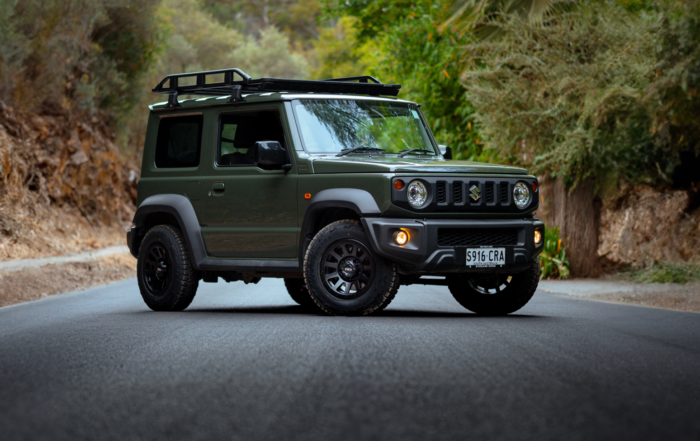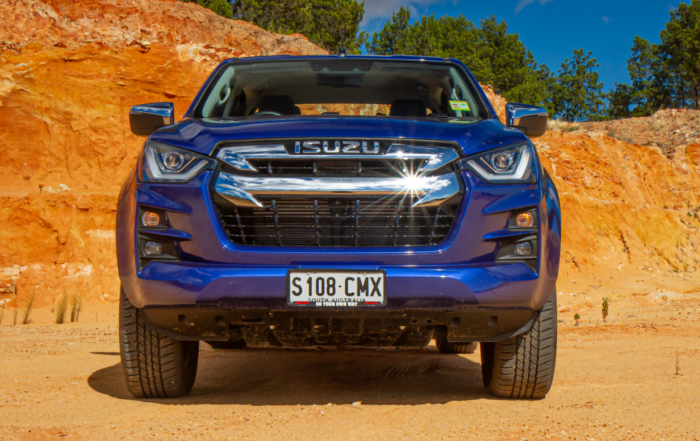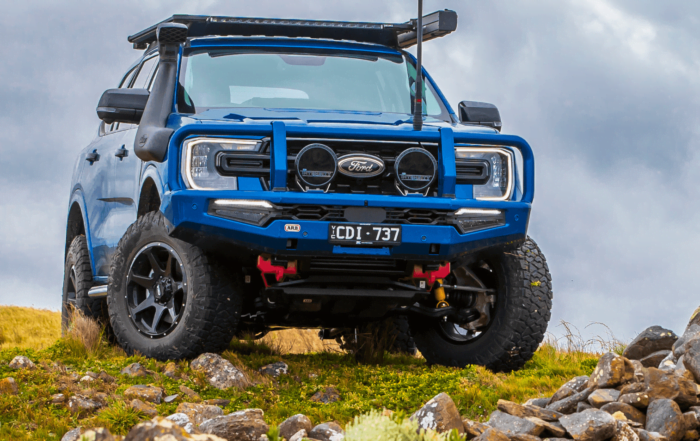2020 Jeep Gladiator Review
2020 Jeep Gladiator Review
Who doesn’t love a ute?
Clearly the best vehicle on the planet for carrying people and goods, it’s an Aussie staple; a fact made obvious when you track the sales of new 4WD vehicles in this country. But if you’ve ever craved something a bit out of the ordinary (the ordinary being a typically bland Japanese ute) and something with some true 4WD capability, there have been bugger-all choices since the departure of the Defender 130.
In 2020, and right slap-bang in the introduction to Covid, Jeep delivered their Wrangler-based Gladiator ute to Australia. Couldn’t do anything about that timing, but sheesh, that must have stunk!
Now, I want you to forget about all the Jeep reliability jibes. I also want you to think beyond a diet of Hiluxes and Rangers that you might have been used to, because Jeep is on a mission, a mission to sell a tonne of product in the coming years.

A new MD in the form of Kevin Flynn arrived at the same time, directing the affairs of the Australian distribution office. He was charged with a renewed focus on quality control, introducing a new five-year warranty to restore some faith in the longevity of the product and buoyed with the confidence of a model range enjoying huge take-up in the USA (the JL series sells like hotcakes in America), Kevin is still sure that Gladiator has plenty of appeal locally.
Jeep weren’t mucking around introducing the Gladiator because the world’s press were invited to Queenstown in New Zealand, the land of the Long White Cloud. Jeep had selected the Wanaka region for the debut because, well, it’s stunning!
Think of the Swiss Alps, but better and so much water! That was a bit of a sticking point because there were three waves of journalists invited to the gig. Before the Aussie contingent lobbed, the folk from North and South America had arrived and after us came the Asian brigade. Those from the Americas saw a massive storm that dumped nearly 800mm of rain and wreaked havoc on the drive legs and the grand reveal upriver from Queenstown. Never mind, because the Jeep team know a thing or two about adversity and realigned the routes and the activities so no-one really noticed.

Following a Maori greeting that was typically full of fear and challenge with plenty of screaming chants and chest-beating, we were introduced to the engineers responsible for the Gladiator’s creation, and that was insightful. It’s not uncommon to attend a new vehicle launch and come away wondering how the project was conceived and scratching your head at how they could have missed their brief by such a wide mark, but that wasn’t the case here, because everyone was on point.
Jeep’s Taylor Langhals and Elizabeth Krear are far removed from your typical engineering stereotype. Taylor’s family have been knocking out Jeeps in Toldeo since forever, and he gets his kicks riding dirt bikes and snowmobiles and using Wranglers to get them to where they can be used. Elizabeth has family who are long-time Chrysler employees, and she designs Dodge RAMs in her spare time when she’s not attending to the chassis and suspension of the Gladiator.
MOPAR man Bill Harry looks more like the journeyman, but get a couple of beers into him and start swapping yarns about Chrysler muscle cars in the 60s and the 70s, and you soon realise this MOPAR-Meister is a car-guy to his roots.

In case you’re wondering, MOPAR stands for Motor Parts and while the original term referred to antifreeze sold through Chrysler dealers as far back as the 1920s, it went on to become popular vernacular for Chrysler performance parts in NASCAR and drag racing circles, back when Hemi engines ruled the roost. Now, and in Jeep terms, it refers to the catalogue of accessories made for Wrangler and Gladiator and sadly the Aussie fun-police are making things difficult, with Bill facing a few hurdles in getting a complete and super-cool range of products to our shores.
The Gladiator itself is one BIG truck, measuring five and a half metres, tip to toe and it packs plenty of presence as a result. The wheelbase is a long at 3,425mm, which explains why the ramp-over angle is only eighteen degrees. Trust me, when you’re punting a Gladiator up a bunch of rocky steps you’ll be thinking of the underbelly and you’ll likely hear it scraping from time to time as well.
And while it may be a big unit, the Gladiator isn’t an intimidating vehicle to drive. Surprisingly for a truck with live-axles front and rear (you beauty), tallish off-road all-terrain rubber (on the Rubicon) and raised suspension, the Gladiator made our ‘Wombat Test’ look easy.

Vehicles set-up this way not so long ago would baulk at being chucked sideways at 80 km/h, yet despite my best efforts, the Gladdie steered precisely where I pointed it and with nary a squeal from its tyres and maintained a relatively flat stance while doing so. Safe to say, it’s safe when the chips are down. Brakes are discs all round, as they should be in all dual-cab utes and they offer up plenty of stopping power and a firm pedal feel.
In a straight line, the Gladiator will require small steering inputs to keep it on the straight and narrow, and there’s the odd jiggle through the wheel on less than perfect surfaces, but that’s life with a live-axle front-end and you adjust surprisingly quickly. In the scheme of live-axle things, the Gladiator is very well behaved.
Under the Gladiator’s hood is a 3.6-litre Pentastar V6 petrol engine that produces 209kW and 347Nm and boasts VVT (Variable Valve Timing) and ESS (Electronic Stop-Start). Luckily with an 8-speed auto there are plenty of gear choices and it doesn’t seem to fall flat on the upshifts, so there’s a steady progression on the move. With a kerb mass of 2,242kgs, the Gladiator is no flyweight, and the V6 provides what I would call adequate, but not especially spectacular, off-the-line performance.

A diesel option would have been well-received here in Australia. The US market scores a 190kW/600Nm 3.0-litre V6 version, renowned for rivers of torque, but for the land Down-Under, Gladiator is petrol-powered only, and that means it’s a thirsty proposition in the field under load. On a recent trip to South Australia’s Flinders Ranges it used litre-for-litre, around 30% more fuel than an accompanying diesel Isuzu MU-X.
Overseas, diesel power is losing some of its shine, as ever more stringent emission controls add complexity and directly impact their reliability, while the comparative simplicity of a petrol engine is winning a new legion of fans.
Jeep is transitioning to an electric future and rapidly. The 4Xe hybrid program is a step to that brave new world and I reckon if we have to move down that pathway (I was going to say suffer) in Australia, this setup has a lot of merit.

Using a 2.0L petrol turbo-four coupled to an 8-speed auto, 4Xe adds a battery pack and two electric motors to significantly boost its outputs. It’s got range-anxiety covered, because you’ve got two sources of energy, therefore you won’t be overly concerned when you head into territory where the poles and wires no longer exist.
One of those electric motors is a 33kW alternator/generator hanging off the front of the petrol engine in the usual fashion. It is driven by a belt from the crank. As the petrol spins, so too the alter-generator, supplying electrical energy into the battery pack, stored for use on demand.
Electric motor number two is rated at 100kW and found in the gearbox. Push hard enough on the go-pedal, or as the brains of the 4Xe recognise it, the vehicle leaps into action.
Jeep claim this combo is good for 280kW and 637Nm, out-grunting the diesel and being partially clean and green at the same time. I reckon it’ll come to these shores, as full EV for an expedition 4WD will be impossible until the infrastructure changes in this country.
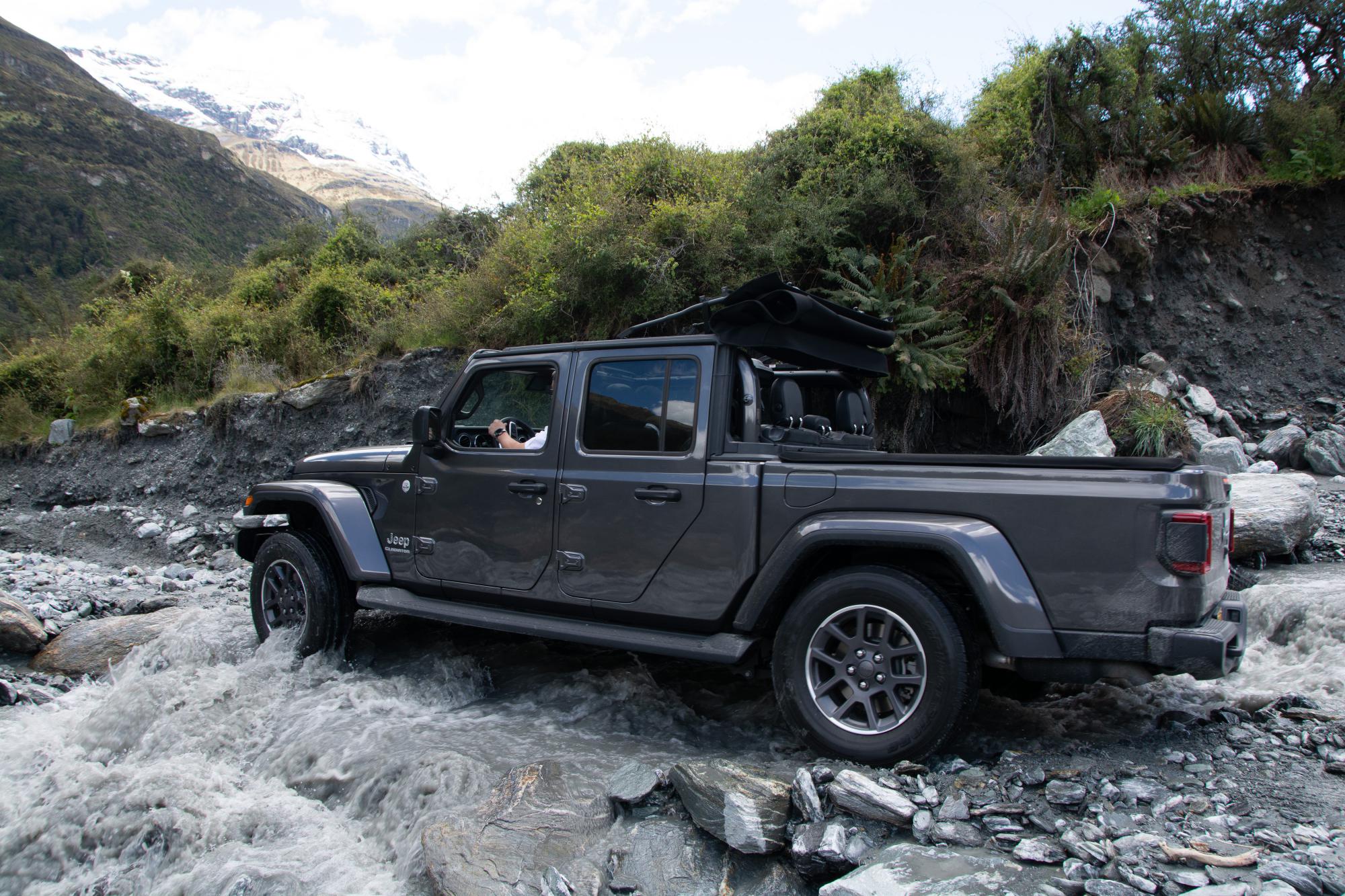
As you’d expect, the Gladiator’s interior is straight out of the JL Wrangler and we’ve had a couple of those on test. Aside from the cramped driver’s footwell, the RHD Wrangler’s cockpit is a good one, offering plenty of comfort and surprisingly premium fit and finish. The Gladiators we were driving in New Zealand were all LHD vehicles and I was surprised at how cramped I felt in the driver’s seat, but that was just me not getting used to having no real estate to my left.
The test vehicles I drove featured a folding fabric convertible roof rather than the Wrangler’s Freedom roof panels. The folding roof was easy to open and close but looked a bit ordinary with the arms and folded fabric bulked up at the rear of the roof space. Top-down it’s a cool ride and appealing to the lifestyle Gladiator owners will likely entertain. We thumped it through some pretty deep standing water at speed, and I can report that with the roof closed it was tight as a drum, but with the roof open, expect to get a little damp. If I were buying a Gladiator, I’d go the front Freedom-panels half-roof option and save on sunscreen.
The Gladiator’s tub is a bit special, as stock-standard it comes with a sprayed-on bed liner, a power-point and tie-downs. There isn’t one of those pathetic and rust-creating drop-in plastic liners to be seen anywhere. The tub was designed by Taylor to be long enough, at just over two metres, to haul a pair of dirt bikes with the tailgate down. Taylor even ensured that the ribbing in the floor and at the back of the cab made it easy to roll or ride the bikes up into position to locate them and tie them down.
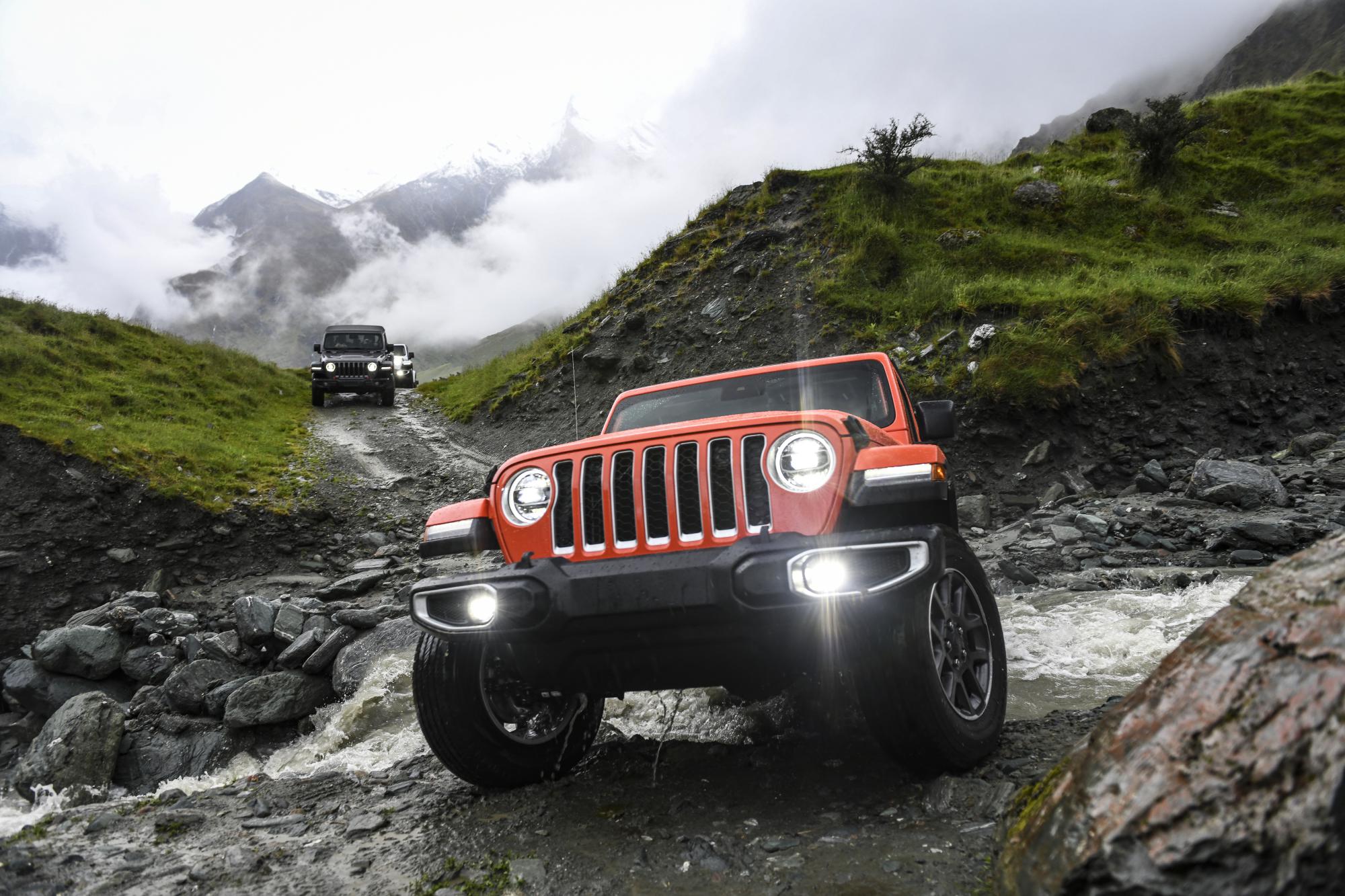
As nice as that tub is, there is one fly in the overall ointment, and that’s its payload, which is just 693kgs, well down on the payload ratings that many of the current, mostly leaf-sprung, 4X4 utes boast at around a tonne. However, we all know that’s mostly a crock of shit, as the sub-standard stock suspension on most 4X4 utes will have sagged to the point of inverting, when anything close to that tonne is dumped in their tubs.
Towing capacity is quoted at 2,721kgs, again way short of the fantasy-land 3,500kgs that the others seem happy to promote.
Off-road the Gladiator is a demon, just like the Wrangler, and it comes with all the fruit that you expect to see in a real 4X4. Compared to Wrangler, both the ramp-over and departure angles have been compromised in creating the Gladiator, but Taylor made sure that there was enough strategically placed underbody protection built-in. I felt entirely comfortable that the inevitable scrapes encountered on the off-road circuit weren’t going to do any damage to the Gladiator’s drivetrain.
The Gladiator’s clearance when things are flat comes in at a whopping 280mm!
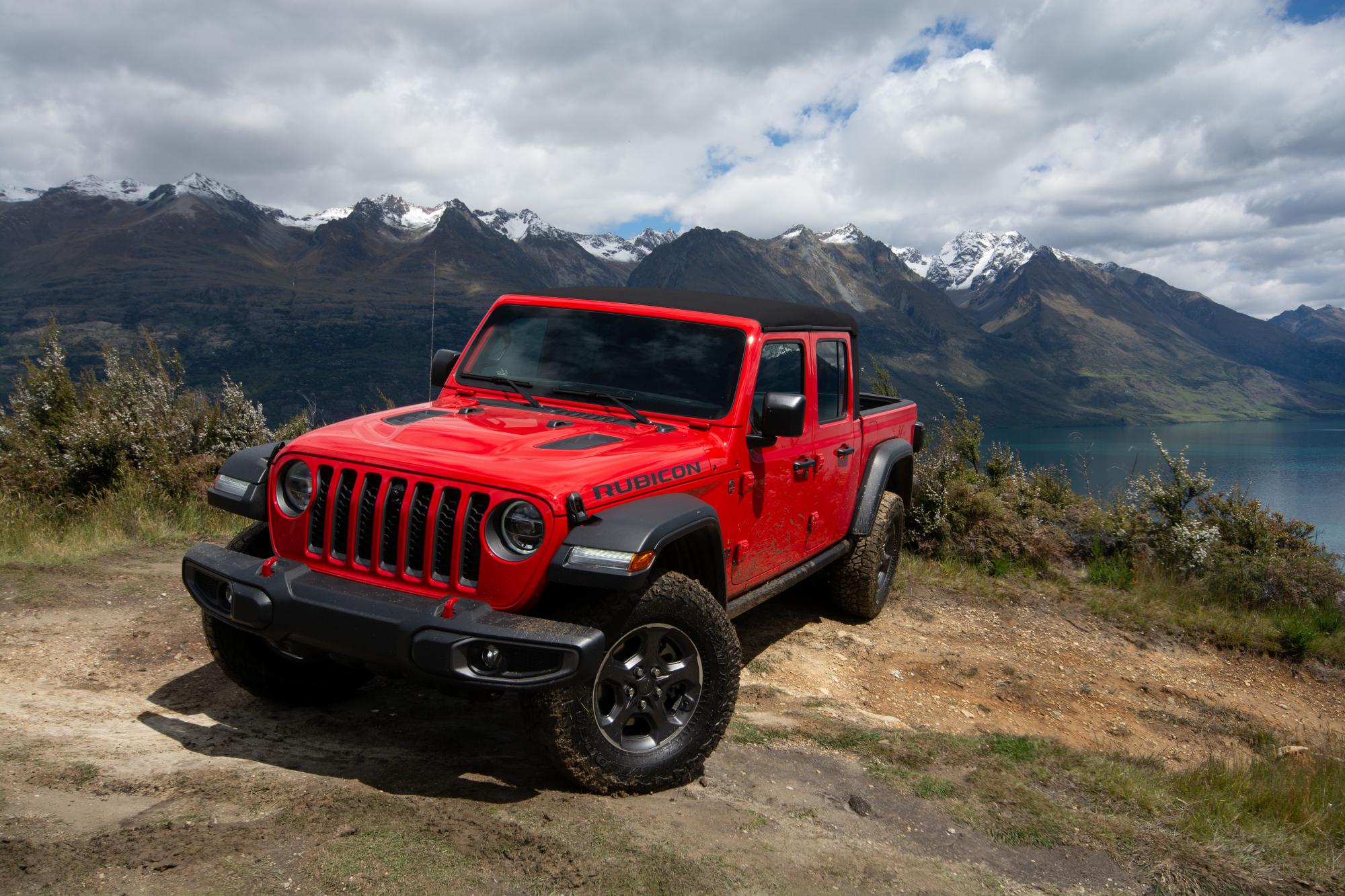
The Gladiator’s stock suspension articulates nicely, thanks in part to the 2” lift that is included in Rubicon spec. The coils (front and rear) are nicely compliant and work in tandem with high-quality Fox shocks to smooth out rough tracks. In Rubicon spec, even more, flex is available from the front-axle by engaging the swaybar disconnect feature.
In low range the gear reduction is epic thanks to its Rock-Trac, constant 4WD driveline. When you’ve got a transfer case offering a 4:01 step offering a ridiculously slow crawl ratio, tippy-toeing over bumps is a piece-of-cake.
Get yourself into a bit of trouble? Likely no problem, because the traction control system is very well tuned, meaning it has a specific brake-traction-control tune for low range and it will engage at the first hint of wheel-slip. None of that holding higher revs than you want and waiting for the spinning wheels to be braked before rocketing ahead nonsense, the Gladiator’s system is all ‘deft-touch’.
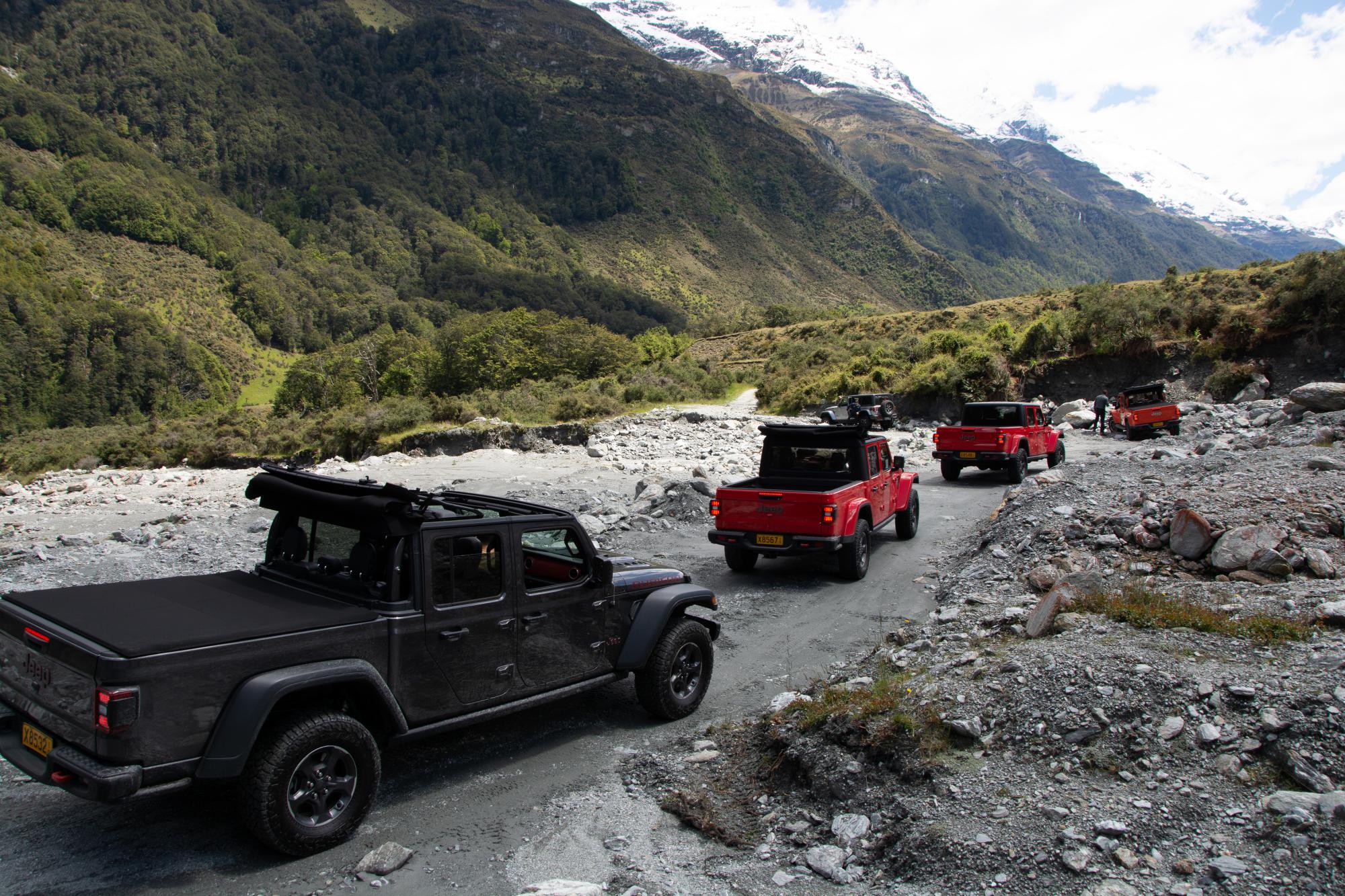
Now we all know that even the best traction control systems aren’t as good as a couple of diff locks, and the Gladiator in Rubicon spec has a pair of those as well. There’s a button with two settings, up for front and rear activation and down for rear only.
The rubber is a little underdone, but at least Jeep have opted for a sensible 17” wheel fitment which will allow some alternative choices, because I can guarantee you just about any Rubicon owner will want to swap out the tiny and odd-sized 255/75R17s, with something like an LT285/70R17. That’ll look more muscular.
The Gladiator is a vehicle that could lift Jeep’s fortunes in Australia and there’s a lot riding on it doing just that. The current petrol-only option is going to hurt volume because Aussies love their diesels and a 3.0-litre V6 pumping out 660Nm would have found plenty of Aussie driveways for a home. I’ll be watching future Jeep Gladiator announcements with a keen eye to the 4Xe program, because that offers plenty of promise as a viable alternative to the diesel. Watch this space!
But Wait, There’s More…
CSA Ridgeline – NEW Suzuki Jimny Fitment
I’m smitten with the JB74 Suzuki Jimny, a vehicle that despite its tiny size is absolutely huge on fun and [...]
Sizing It Up – CSA Raptor v MR Triton
The CSA Raptor wheels have been on the MitsiMates Triton for over 6 months now, and we’re still feeling the [...]
Matty Hill Chooses The Konig Hypergram
We’re excited! Our Konig Hypergram flow formed wheels have recently had their debut under Matty Hill’s S15 drift car monster [...]
2022 Isuzu D-MAX LS-U+ Review
I can still remember the first current generation D-MAX I drove. It was winter in 2020 (I think) and we’d [...]
2023 Next-Gen Ranger By ARB
Built for touring, this ARB Next-Gen Ranger build showcases the breadth of products that the off-road brand has created for [...]
2023 Next-Gen Everest By ARB
We all know that the right wheels are an integral component of any serious vehicle build, and this Ford Everest, [...]
Who doesn’t love a ute?
Clearly the best vehicle on the planet for carrying people and goods, it’s an Aussie staple; a fact made obvious when you track the sales of new 4WD vehicles in this country. But if you’ve ever craved something a bit out of the ordinary (the ordinary being a typically bland Japanese ute) and something with some true 4WD capability, there have been bugger-all choices since the departure of the Defender 130.
In 2020, and right slap-bang in the introduction to Covid, Jeep delivered their Wrangler-based Gladiator ute to Australia. Couldn’t do anything about that timing, but sheesh, that must have stunk!
Now, I want you to forget about all the Jeep reliability jibes. I also want you to think beyond a diet of Hiluxes and Rangers that you might have been used to, because Jeep is on a mission, a mission to sell a tonne of product in the coming years.

A new MD in the form of Kevin Flynn arrived at the same time, directing the affairs of the Australian distribution office. He was charged with a renewed focus on quality control, introducing a new five-year warranty to restore some faith in the longevity of the product and buoyed with the confidence of a model range enjoying huge take-up in the USA (the JL series sells like hotcakes in America), Kevin is still sure that Gladiator has plenty of appeal locally.
Jeep weren’t mucking around introducing the Gladiator because the world’s press were invited to Queenstown in New Zealand, the land of the Long White Cloud. Jeep had selected the Wanaka region for the debut because, well, it’s stunning!
Think of the Swiss Alps, but better and so much water! That was a bit of a sticking point because there were three waves of journalists invited to the gig. Before the Aussie contingent lobbed, the folk from North and South America had arrived and after us came the Asian brigade. Those from the Americas saw a massive storm that dumped nearly 800mm of rain and wreaked havoc on the drive legs and the grand reveal upriver from Queenstown. Never mind, because the Jeep team know a thing or two about adversity and realigned the routes and the activities so no-one really noticed.

Following a Maori greeting that was typically full of fear and challenge with plenty of screaming chants and chest-beating, we were introduced to the engineers responsible for the Gladiator’s creation, and that was insightful. It’s not uncommon to attend a new vehicle launch and come away wondering how the project was conceived and scratching your head at how they could have missed their brief by such a wide mark, but that wasn’t the case here, because everyone was on point.
Jeep’s Taylor Langhals and Elizabeth Krear are far removed from your typical engineering stereotype. Taylor’s family have been knocking out Jeeps in Toldeo since forever, and he gets his kicks riding dirt bikes and snowmobiles and using Wranglers to get them to where they can be used. Elizabeth has family who are long-time Chrysler employees, and she designs Dodge RAMs in her spare time when she’s not attending to the chassis and suspension of the Gladiator.
MOPAR man Bill Harry looks more like the journeyman, but get a couple of beers into him and start swapping yarns about Chrysler muscle cars in the 60s and the 70s, and you soon realise this MOPAR-Meister is a car-guy to his roots.

In case you’re wondering, MOPAR stands for Motor Parts and while the original term referred to antifreeze sold through Chrysler dealers as far back as the 1920s, it went on to become popular vernacular for Chrysler performance parts in NASCAR and drag racing circles, back when Hemi engines ruled the roost. Now, and in Jeep terms, it refers to the catalogue of accessories made for Wrangler and Gladiator and sadly the Aussie fun-police are making things difficult, with Bill facing a few hurdles in getting a complete and super-cool range of products to our shores.
The Gladiator itself is one BIG truck, measuring five and a half metres, tip to toe and it packs plenty of presence as a result. The wheelbase is a long at 3,425mm, which explains why the ramp-over angle is only eighteen degrees. Trust me, when you’re punting a Gladiator up a bunch of rocky steps you’ll be thinking of the underbelly and you’ll likely hear it scraping from time to time as well.
And while it may be a big unit, the Gladiator isn’t an intimidating vehicle to drive. Surprisingly for a truck with live-axles front and rear (you beauty), tallish off-road all-terrain rubber (on the Rubicon) and raised suspension, the Gladiator made our ‘Wombat Test’ look easy.

Vehicles set-up this way not so long ago would baulk at being chucked sideways at 80 km/h, yet despite my best efforts, the Gladdie steered precisely where I pointed it and with nary a squeal from its tyres and maintained a relatively flat stance while doing so. Safe to say, it’s safe when the chips are down. Brakes are discs all round, as they should be in all dual-cab utes and they offer up plenty of stopping power and a firm pedal feel.
In a straight line, the Gladiator will require small steering inputs to keep it on the straight and narrow, and there’s the odd jiggle through the wheel on less than perfect surfaces, but that’s life with a live-axle front-end and you adjust surprisingly quickly. In the scheme of live-axle things, the Gladiator is very well behaved.
Under the Gladiator’s hood is a 3.6-litre Pentastar V6 petrol engine that produces 209kW and 347Nm and boasts VVT (Variable Valve Timing) and ESS (Electronic Stop-Start). Luckily with an 8-speed auto there are plenty of gear choices and it doesn’t seem to fall flat on the upshifts, so there’s a steady progression on the move. With a kerb mass of 2,242kgs, the Gladiator is no flyweight, and the V6 provides what I would call adequate, but not especially spectacular, off-the-line performance.

A diesel option would have been well-received here in Australia. The US market scores a 190kW/600Nm 3.0-litre V6 version, renowned for rivers of torque, but for the land Down-Under, Gladiator is petrol-powered only, and that means it’s a thirsty proposition in the field under load. On a recent trip to South Australia’s Flinders Ranges it used litre-for-litre, around 30% more fuel than an accompanying diesel Isuzu MU-X.
Overseas, diesel power is losing some of its shine, as ever more stringent emission controls add complexity and directly impact their reliability, while the comparative simplicity of a petrol engine is winning a new legion of fans.
Jeep is transitioning to an electric future and rapidly. The 4Xe hybrid program is a step to that brave new world and I reckon if we have to move down that pathway (I was going to say suffer) in Australia, this setup has a lot of merit.

Using a 2.0L petrol turbo-four coupled to an 8-speed auto, 4Xe adds a battery pack and two electric motors to significantly boost its outputs. It’s got range-anxiety covered, because you’ve got two sources of energy, therefore you won’t be overly concerned when you head into territory where the poles and wires no longer exist.
One of those electric motors is a 33kW alternator/generator hanging off the front of the petrol engine in the usual fashion. It is driven by a belt from the crank. As the petrol spins, so too the alter-generator, supplying electrical energy into the battery pack, stored for use on demand.
Electric motor number two is rated at 100kW and found in the gearbox. Push hard enough on the go-pedal, or as the brains of the 4Xe recognise it, the vehicle leaps into action.
Jeep claim this combo is good for 280kW and 637Nm, out-grunting the diesel and being partially clean and green at the same time. I reckon it’ll come to these shores, as full EV for an expedition 4WD will be impossible until the infrastructure changes in this country.

As you’d expect, the Gladiator’s interior is straight out of the JL Wrangler and we’ve had a couple of those on test. Aside from the cramped driver’s footwell, the RHD Wrangler’s cockpit is a good one, offering plenty of comfort and surprisingly premium fit and finish. The Gladiators we were driving in New Zealand were all LHD vehicles and I was surprised at how cramped I felt in the driver’s seat, but that was just me not getting used to having no real estate to my left.
The test vehicles I drove featured a folding fabric convertible roof rather than the Wrangler’s Freedom roof panels. The folding roof was easy to open and close but looked a bit ordinary with the arms and folded fabric bulked up at the rear of the roof space. Top-down it’s a cool ride and appealing to the lifestyle Gladiator owners will likely entertain. We thumped it through some pretty deep standing water at speed, and I can report that with the roof closed it was tight as a drum, but with the roof open, expect to get a little damp. If I were buying a Gladiator, I’d go the front Freedom-panels half-roof option and save on sunscreen.
The Gladiator’s tub is a bit special, as stock-standard it comes with a sprayed-on bed liner, a power-point and tie-downs. There isn’t one of those pathetic and rust-creating drop-in plastic liners to be seen anywhere. The tub was designed by Taylor to be long enough, at just over two metres, to haul a pair of dirt bikes with the tailgate down. Taylor even ensured that the ribbing in the floor and at the back of the cab made it easy to roll or ride the bikes up into position to locate them and tie them down.

As nice as that tub is, there is one fly in the overall ointment, and that’s its payload, which is just 693kgs, well down on the payload ratings that many of the current, mostly leaf-sprung, 4X4 utes boast at around a tonne. However, we all know that’s mostly a crock of shit, as the sub-standard stock suspension on most 4X4 utes will have sagged to the point of inverting, when anything close to that tonne is dumped in their tubs.
Towing capacity is quoted at 2,721kgs, again way short of the fantasy-land 3,500kgs that the others seem happy to promote.
Off-road the Gladiator is a demon, just like the Wrangler, and it comes with all the fruit that you expect to see in a real 4X4. Compared to Wrangler, both the ramp-over and departure angles have been compromised in creating the Gladiator, but Taylor made sure that there was enough strategically placed underbody protection built-in. I felt entirely comfortable that the inevitable scrapes encountered on the off-road circuit weren’t going to do any damage to the Gladiator’s drivetrain.
The Gladiator’s clearance when things are flat comes in at a whopping 280mm!

The Gladiator’s stock suspension articulates nicely, thanks in part to the 2” lift that is included in Rubicon spec. The coils (front and rear) are nicely compliant and work in tandem with high-quality Fox shocks to smooth out rough tracks. In Rubicon spec, even more, flex is available from the front-axle by engaging the swaybar disconnect feature.
In low range the gear reduction is epic thanks to its Rock-Trac, constant 4WD driveline. When you’ve got a transfer case offering a 4:01 step offering a ridiculously slow crawl ratio, tippy-toeing over bumps is a piece-of-cake.
Get yourself into a bit of trouble? Likely no problem, because the traction control system is very well tuned, meaning it has a specific brake-traction-control tune for low range and it will engage at the first hint of wheel-slip. None of that holding higher revs than you want and waiting for the spinning wheels to be braked before rocketing ahead nonsense, the Gladiator’s system is all ‘deft-touch’.

Now we all know that even the best traction control systems aren’t as good as a couple of diff locks, and the Gladiator in Rubicon spec has a pair of those as well. There’s a button with two settings, up for front and rear activation and down for rear only.
The rubber is a little underdone, but at least Jeep have opted for a sensible 17” wheel fitment which will allow some alternative choices, because I can guarantee you just about any Rubicon owner will want to swap out the tiny and odd-sized 255/75R17s, with something like an LT285/70R17. That’ll look more muscular.
The Gladiator is a vehicle that could lift Jeep’s fortunes in Australia and there’s a lot riding on it doing just that. The current petrol-only option is going to hurt volume because Aussies love their diesels and a 3.0-litre V6 pumping out 660Nm would have found plenty of Aussie driveways for a home. I’ll be watching future Jeep Gladiator announcements with a keen eye to the 4Xe program, because that offers plenty of promise as a viable alternative to the diesel. Watch this space!
But Wait, There’s More…
CSA Ridgeline – NEW Suzuki Jimny Fitment
I’m smitten with the JB74 Suzuki Jimny, a vehicle that despite its tiny size is absolutely huge on fun and [...]
Sizing It Up – CSA Raptor v MR Triton
The CSA Raptor wheels have been on the MitsiMates Triton for over 6 months now, and we’re still feeling the [...]
Matty Hill Chooses The Konig Hypergram
We’re excited! Our Konig Hypergram flow formed wheels have recently had their debut under Matty Hill’s S15 drift car monster [...]

